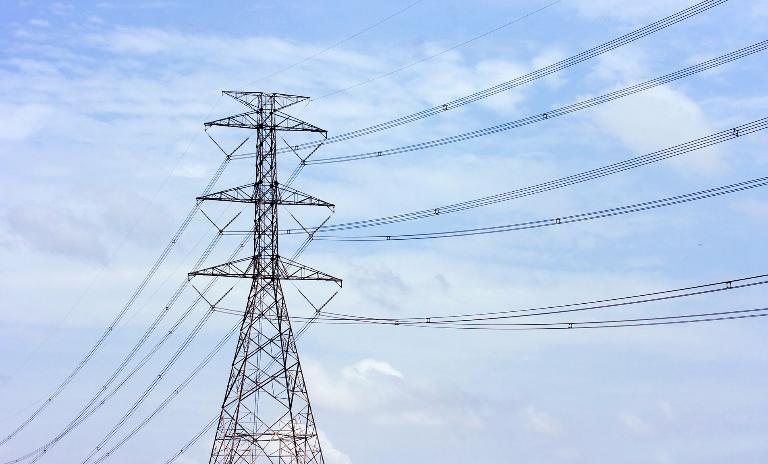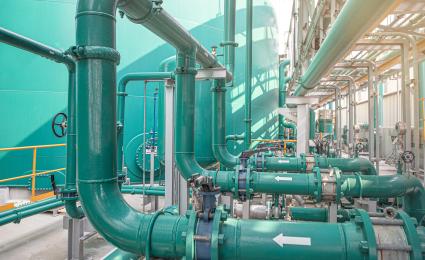Although Europe today dominates the offshore wind energy market, global competition is increasing. Learn more in Roland Berger’s latest study and see what steps Europe can take to maintain its control.


War in Ukraine: Lessons for managing the energy transition
By David Frans
Energy markets in Europe and around the world are still reacting to the tragic conflict in the Ukraine. Within one week after the crisis began on February 24, oil and natural gas prices in Europe jumped 23% and 40% respectively. As of March 7th, oil prices were $130/barrel. They had crossed the $100 mark a few days earlier, for the first time in 8 years. Electricity prices, tightly correlated with natural gas prices, are rising just as rapidly. The decoupling of Russia from the West has thus illuminated the brittleness of the global energy market . The impact will be felt in higher price rises and potential shortages, which always hurt poor and disadvantaged communities disproportionately. The consequences may get even more extreme, while the global energy system searches for a new equilibrium.

It’s important to view this disruption in a broader context. It is an accelerated dress rehearsal for the ongoing transition to decarbonized energy systems – a transition which was already underway, and which policy makers around the world have committed to pursuing through the coming decade and beyond. In that context, three questions are critically important:
- What does the current situation reveal about the pace of change the current global energy system can tolerate?
- How will this crisis affect the energy transition; will it accelerate or slow the pace of change?
- What lessons, if any, does it hold for our energy system going forward?
Let’s look at these questions in turn.
Energy System Vulnerability Revealed
The pressures on the global energy system are arguably more severe than they have been since the early 1980s. So far, the risk of deprivation is greatest with natural gas , especially in western and central Europe. Though global oil prices are also primed to spike to potentially unprecedented levels, oil is a global rather than regional energy commodity. All three of the three main customer segments for natural gas – electric power generation, industrial use, and residential heating – will struggle to adjust should Russian gas supplies be cut off.
In 2021, Russia provided about 155 billion cubic meters (BCM) of natural gas to the European Union and the UK, over 30% of its total gas consumption. (See figure 1.) The impact of suddenly cutting this off will vary, depending on the range of available alternatives for each demand segment. Power generators, which represent 30% of total demand for natural gas in Europe, will have the most options. Within the coming months, increasing generation from already operating and moth-balled coal plants could in theory offset all of current gas demand for power production, albeit with a substantial increase in CO2 emissions. Restarting Germany's shuttered nuclear plants – no longer unthinkable – could displace another 30-40 BCM, but that would take months. Replacing the Russian share of power sector natural gas with renewable generation sources would take longer still. As much as 60-70 GW of new wind generation would have to come online, compared to 220 GW currently installed. This would need to be complemented by a massive investment in energy storage and other dispatchable generation capacity to cope with wind's intermittency.
Finding alternatives to industrial and petrochemical natural gas applications is more difficult. Near-term options are limited, and shortages are a real likelihood, especially if regulators and governments seek to preserve supply for the residential segment. Hydrogen is a much-discussed alternative, but the requisite infrastructure and production capacity would require several years to put in place. And the hydrogen would in turn require a further 450-750 GW of wind generation capacity to produce.
For residential heating demand currently supplied by natural gas, electric-powered heat pumps would have to be installed to substitute for gas-based systems. Significant savings could also be realized through improved energy efficiency, a chronically underutilized solution. (Energy efficiency would also be a good move for power generation and industrial applications.) The combination of energy efficiency and electrification could compensate for the loss of Russian gas. But it would likely take several years to implement.
The supply picture poses similar medium-term challenges. An analysis by the Brussels-based Bruegel economic think tank suggests that with Spring coming soon, there should be enough natural gas from non-Russian sources to avoid blackouts and other disruptions, and keep the European economy running. These sources could include new production of gas in Europe and increased liquified natural gas (LNG) imports from suppliers in Australia, Qatar, the United States, and elsewhere, abetted by added capacity in natural gas storage. However, it’s not clear if these sources will suffice through next winter, especially given the steady level of overall demand for natural gas in the EU and UK, which has not appreciably changed over the last 12 years.
Catalyst or Hurdle for the Transition?
How will the current crisis affect the pace and form of the energy transition, which had been gathering momentum toward decarbonization? Already, the prospect of energy shortages has diverted political and media attention away from climate change, which is reverting to its traditional status as a serious but not urgent topic.
Many commentators view the disruption of energy prices and availability as a reason to accelerate the energy transition. In their view, crises are catalysts for rapid technological and behavioral change. Just as the Covid-19 shutdown made remote work and telemedicine more acceptable, higher energy prices could raise the perceived value of energy efficiency, clean energy, and even nuclear power. Locally available energy sources like wind , solar, and geothermal, along with increased reliance on distributed energy resources, may be viewed as essential for reducing the industrialized world's vulnerability to geopolitical pressure-tactics and embargos.
More skeptical observers argue that the crisis shows why the transition needs to move more slowly. In their view, the climate change movement has made energy systems more rigid by discouraging investments in hydrocarbon-based-energy such as LNG and coal-fired generation – fuel sources whose short-term importance is highlighted by the current crisis. Meanwhile, potential shortages and price spikes for key inputs into electric vehicles such as nickel will demonstrate that decarbonized energy is vulnerable to geopolitical disruption as well.
Resilience and Efficiency
The need for greater resilience in energy systems appears to be a primary – and non-controversial – lesson from this crisis. The ability to provide affordable and reliable energy hinges on the ability to weather natural and geopolitical shocks. Brittleness in energy systems results from excessive reliance on a narrow set of sources of supply, be they renewable or hydrocarbon-based.
Improved efficiency in the use of energy - across the value chain – is an even more powerful lever for improving the robustness of energy systems in the face of shifting supply, regardless of whether the disruption is from weather or geopolitics.
Resilience can be achieved through policy, complemented by market mechanisms. Prices alone can't change behavior if the economy doesn't have the time and resources to respond. Policy makers and regulators have proven tools to increase the ability of energy systems to manage low-probability, high-impact contingencies. For example, they can use technical standards to create strong incentives to accelerate energy efficiency improvements for electricity and natural gas. Regulators can be directed to define and enforce more stringent reliability standards for power and natural gas providers, offering a basis for compensating energy providers to maintain higher levels of excess (and/or more diversified) reserves for emergencies
As the world embarks on the transition to decarbonized energy production, taking these economic realities into account could avoid fractious political backlash and wasted resources. As we continue advancing down the path to the next generation of energy technologies, we know that more “unforeseeable” crises will come our way. We may not be able to prepare for them specifically, but in the aftermath of Ukraine, we should have an increased awareness of the scale of the challenge, and the importance of building more flexibility into the energy system.
Sign up for our newsletter and get regular insights on newest publications related to Energy & Utilities.

![Russian gas imports and European gas demand [BCM / year].](https://img.rolandberger.com/content_assets/content_images/captions/800_Ukraine_and_Energy_Transition_Graph_01_image_caption_none.png?v=770441)
_tile_teaser_w425x260.jpg?v=770441)



